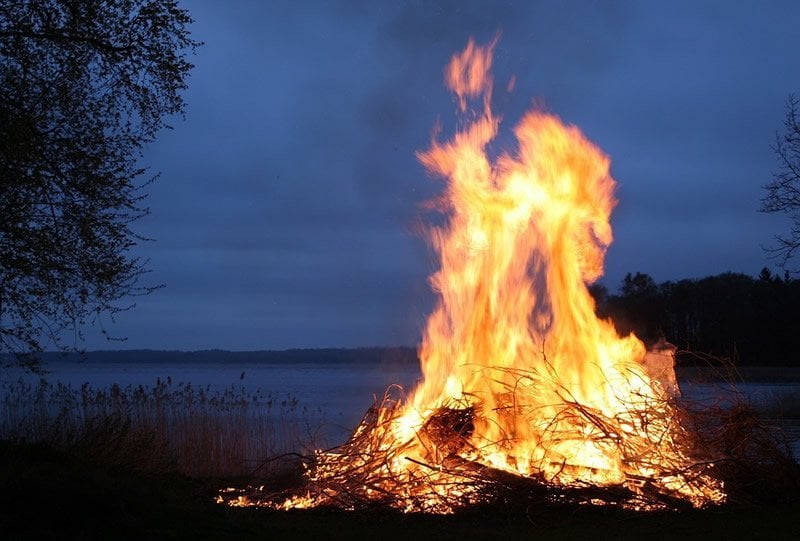Summary: Study reveals Neanderthals were able to generate fire, disputing the common theory that Homo Sapiens were the original fire starters.
Source: University of Connecticut
Fire starting is a skill that many modern humans struggle with, in the absence of a lighter or matches. The earliest humans likely harvested fire from natural sources, yet when our ancestors learned the skills to set fire at will, they had newfound protection, a means of cooking, light to work by, and warmth at their fingertips.
Just when this momentous acquisition of knowledge occurred has been a hotly debated topic for archaeologists.
Now, a team of University of Connecticut researchers, working with colleagues from Armenia, the U.K., and Spain, has found compelling evidence that early humans such as Neanderthals not only controlled fire, but also mastered the ability to generate it.
“Fire was presumed to be the domain of Homo sapiens but now we know that other ancient humans like Neanderthals could create it,” says co-author Daniel Adler, associate professor in anthropology. “So perhaps we are not so special after all.”
Their work, published today in Scientific Reports, pairs archaeological, hydrocarbon and isotope evidence of human interactions with fire, with what the climate was like tens of thousands of years ago.
Using specific fire-related molecules deposited in the archaeological record and an analysis of climatological clues, the researchers examined Lusakert Cave 1 in the Armenian Highlands.
“Fire starting is a skill that has to be learned — I never saw anyone who managed to produce fire without first being taught. So the assumption that someone has the capability to set fire at will is a source of debate,” says Gideon Hartman, associate professor of anthropology, and study co-author.
The research team looked at sediment samples to determine the abundance of polycyclic aromatic hydrocarbons (PAHs), which are released when organic material is burned.
One type of PAH called light PAHs, disperse widely and are indicative of wildfires while others, called heavy PAHs, disperse narrowly and remain much closer to the source of fire.
“Looking at the markers for fires that are locally made, we start to see other human activity correlating with more evidence of locally-made fire,” says lead author Alex Brittingham, a UConn doctoral student in anthropology.
Evidence of increased human occupation at the site, such as concentrations of animal bones from meals and evidence of tool making, correlated with increased fire frequency and the increased frequency of heavy PAHs.
Researchers also needed to rule out the possibility that unsettled weather, which gives rise to lightning, had ignited the fires.
To do so, they analyzed hydrogen and carbon isotope composition of the waxy cuticles of ancient plant tissues preserved in sediments. The distribution of these leaf waxes indicate what kind of climate the plants grew in.
They could not find any evidence of a link between overall paleoclimatic conditions and the geochemical record of fire, says Michael Hren, study author and associate professor of geosciences.
“In order to routinely access naturally caused fires, there would need to have been conditions that would produce lighting strikes at a relative frequency that could have ignited wildfires,” says Hren.
By pairing the climate data with the evidence found in the archaeological record, the researchers then determined the cave’s inhabitants were not living in drier, wildfire-prone conditions while they were utilizing fires within the cave.

In fact, there were fewer wildfires for these ancient humans to harvest at the time when fire frequency and heavy PAH frequency was high in the cave, says Brittingham.
“It seems they were able to control fire outside of the natural availability of wildfires,” says Brittingham.
Brittingham is now applying the same research techniques to analyze other caves occupied by early humans. He is currently working with a team in Georgia, among other locations, to determine whether fire was developed independently by groups in different geographic areas.
“Was it something that people in Armenia could do but people in France could not do? Was it developed independently?,” asks Brittingham.
Source:
University of Connecticut
Media Contacts:
Kristen Cole – University of Connecticut
Image Source:
The image is in the public domain.
Original Research: Open access
“Geochemical Evidence for the Control of Fire by Middle Palaeolithic Hominins”. Alex Brittingham, Michael T. Hren, Gideon Hartman, Keith N. Wilkinson, Carolina Mallol, Boris Gasparyan & Daniel S. Adler.
Scientific Reports doi:10.1038/s41598-019-51433-0.
Abstract
Geochemical Evidence for the Control of Fire by Middle Palaeolithic Hominins
The use of fire played an important role in the social and technological development of the genus Homo. Most archaeologists agree that this was a multi-stage process, beginning with the exploitation of natural fires and ending with the ability to create fire from scratch. Some have argued that in the Middle Palaeolithic (MP) hominin fire use was limited by the availability of fire in the landscape. Here, we present a record of the abundance of polycyclic aromatic hydrocarbons (PAHs), organic compounds that are produced during the combustion of organic material, from Lusakert Cave, a MP site in Armenia. We find no correlation between the abundance of light PAHs (3–4 rings), which are a major component of wildfire PAH emissions and are shown to disperse widely during fire events, and heavy PAHs (5–6 rings), which are a major component of particulate emissions of burned wood. Instead, we find heavy PAHs correlate with MP artifact density at the site. Given that hPAH abundance correlates with occupation intensity rather than lPAH abundance, we argue that MP hominins were able to control fire and utilize it regardless of the variability of fires in the environment. Together with other studies on MP fire use, these results suggest that the ability of hominins to manipulate fire independent of exploitation of wildfires was spatially variable in the MP and may have developed multiple times in the genus Homo.






